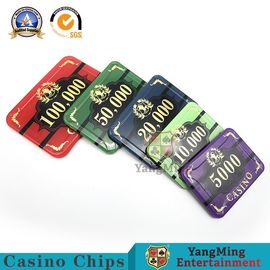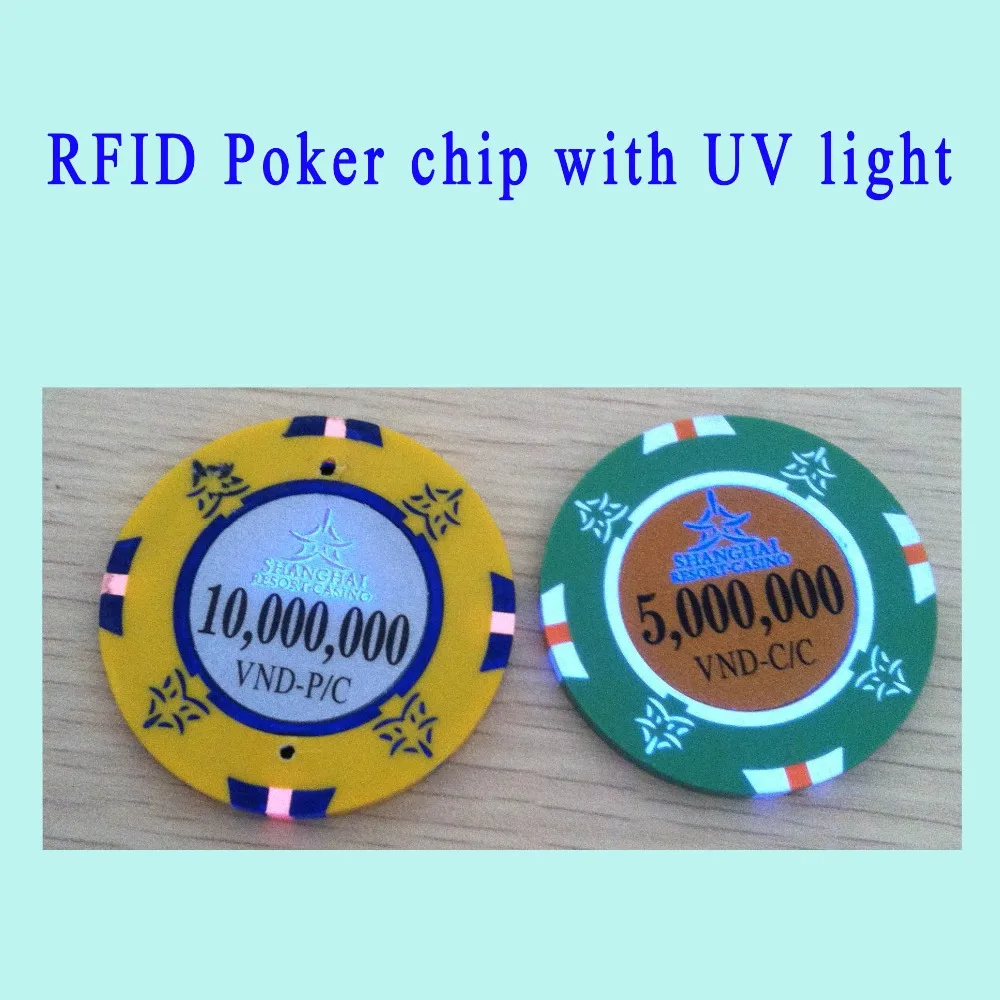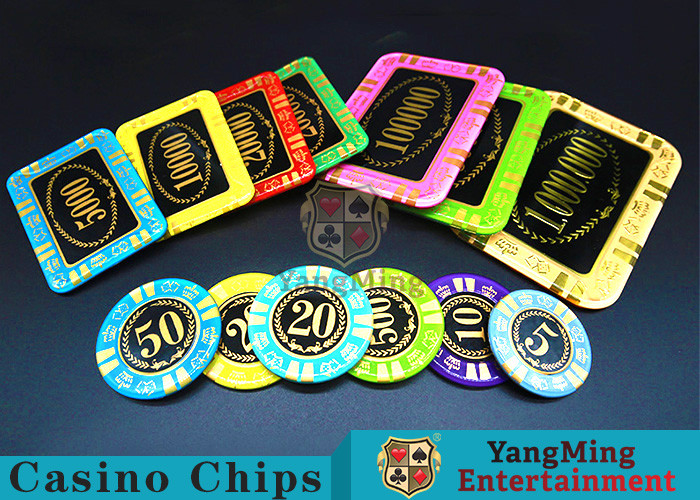Casino Chips With Rfid Chip
If you watch televised or live-stream poker, you’ve almost certainly heard the acronym RFID in connection with hole card information at final tables. The use of hole card information revolutionized televised poker when Late Night Poker in the UK first started using hole card cameras in 1999.
Over the years, various forms of the hole cam have been used, from a transparent panel in the table which read the cards while face down, to small cameras mounted in the rail that see the cards as players peel them to look for themselves.
Dolphin Products will become VendingData's exclusive casino chip manufacturer. Dolphin Products began designing and manufacturing traditional gaming chips in 1994 and has become a significant casino chip producer internationally. Dolphin began work on an RFID-enabled casino chip in 1995 using the 125 KHZ frequency. We would like to show you a description here but the site won’t allow us. FEIG ELECTRONICS Long Range Reader LRU1002 http://www.feig-electronics.com/en/products/obid/product-areas/obid-i-scan-uhf/long-range-reader/id-isclru1002-fix.
Taking your money and running also falls under intense technological scrutiny ” the chip-cashing booth is the last line of defence against cheaters. Many casino chips now contain itty-bitty RFID. YH Casino Chips RFID Clay Poker Chip Set Best Poker Chip With Poker Case. US $14.90-$26.90. YH Casino 11.5g ABS Classic Poker Chips Premium Poker Chip Customized RFID Poker Chips for Sale. Ceramic poker chips 10g chips ceramic 300 pcs custom rfid poker chip set.

In recent years, however, a new kind of hole card technology has been making its way into live poker: radio-frequency identification (RFID) playing cards and tables. Rather than using any kind of camera, RFID uses special cards equipped with radio-frequency identification chips, or “tags.” RFID readers are positioned in certain spots on the table to read the tag of each card and send the data to tournament or TV production computers. RFID can also be used in chips to automatically count the value of stacks, bets, and pot totals, though that implementation is more complex than simple hole card information.
RFID is used in many activities outside of poker, and actually refers to a wide range of technologies that use various power levels and frequencies. You almost certainly encounter RFID in your daily life and not even realize it. Most big box stores use RFID tags in merchandise and hand-held readers to do inventory work in massive warehouse storage areas, as well as track product on the shelves. In this sort of RFID implementation, high-frequency tags are used in conjunction with readers that can see that signal from as far away as 100 metres or more.

Casino Chips With Rfid Chip Holder
In poker, that would present something of a problem. In the asset-tracking tasks, we see tags that are wirelessly broadcasting their data to readers quite a distance away. That’s a pretty bad scenario for hole card information in a poker tournament. The prospect of cards wirelessly transmitting their value is pretty scary for a poker player. With the ubiquity of smart phones and the ability to make readers very small, it would be relatively easy for the wrong people to intercept that data if a player’s cards were transmitting their value for meters around the table. Those concerns can be mitigated by using encrypted tags, making the data harder to decipher, but the best solution is to remove the broadcast function all together.
Fortunately, RFID comes in a wide range of frequencies. High-frequency tags are actually radiative and broadcast in the traditional sense. Low-frequency tags, however, are inductive and have no independent power; without external power, the tag is little more than inert metal.

The tag gets its power from a reader in close proximity and the reader actually gets the tag information by measuring differences in current between near and far sides of the tag antenna. The difference in current is only evident at very close range; farther away there is no significant difference to read. As the tag antenna gets smaller, readers need to be much closer in order to register anything from the tag.
Daniel Dobkin explains in an article on the Enigmatics Consulting website:
“When the antennas are very small compared to the wavelength, the effects of the currents flowing in the antenna cancel when viewed from a great distance, so there is no radiation. Only objects so close to the antenna that one part of the antenna appears significantly closer than another part can feel the presence of the current. Thus, these systems, which are known as inductively-coupled systems, are limited to short ranges comparable to the size of the antenna.”
With frequencies below 100 kHz (and corresponding wavelengths of 3 km and longer) the tiny antennas attached to a playing card RFID chip means a reader has to be in virtual contact with the tag to read it. Viewers can see the results of this in real-time while watching final tables. It’s fairly common to see a case where only one hole card shows up (or none) and the dealer will ask the player to reposition their cards or will sweep the cards over a certain spot on the table after a muck. The reason for that is the antenna in one or both cards wasn’t close enough to the reader in the table to identify them, and it’s often as little as 1 cm or less in misplacement that makes the difference.

Without question, we will see more RFID in use in the gaming industry. Its use in asset-tracking for chips and other parts of the casino is very useful, especially for security. RFID tagged chips will not only know what value they are, but could be tracked with a full history of how and where in the casino that specific chip has been used. The security advantages are huge, and it will make counterfeit chips far more difficult to introduce into the system. The recent Borgata counterfeit chip scandal may well have been prevented, or at least identified far sooner, with RFID embedded poker chips. More than simply mimicking the look of the chips, counterfeiting an RFID chip requires specific knowledge of the tags, encryption, and references used by the casino for tracking. The same thing applies to card security.
For televised poker, RFID cards are a huge advantage. The technology involved is far less complex than hole card cameras in many ways, and getting the hole card data electronically instead of visually (as happens with cameras) allows a production team to present the cards in more graphically interesting ways by receiving the data in real time. RFID is what allows for the more complex card and hand graphics we see today during live streams and poker TV programs as compared to five or 10 years ago. Add that to the security advantages that RFID asset-tracking gives to casino management, and it’s pretty clear that RFID is an important technology for poker and gaming in general.
*Lead image courtesy of Abbiati Casino Equipment
**RFID chip photo courtesy of Wired
Get all the latest PokerNews Canada updates on your social media outlets. Follow us on Twitter and like us on Facebook!
Casino Chips With Rfid Chip
Tags
RFIDtechnologyRelated Room
PartyPoker